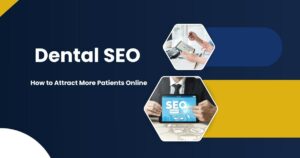Mastering Website SEO to Boost Your Online Visibility

Building a website is just the first step toward digital success. The real challenge lies in making your website visible to your audience. That’s where SEO, or search engine optimization, comes into play. Knowing how to properly optimize your website’s SEO can significantly increase organic traffic, improve user experience, and elevate your rankings on search engines.
What Is Website SEO?
Website SEO refers to the process of improving your website’s visibility on search engine result pages (SERPs). Search engines like Google use complex algorithms to rank websites based on their relevance, usability, and efficiency. SEO involves optimizing various elements of your website so it performs well under these criteria.
By applying effective SEO strategies, you make it easier for your target audience to find your site when they search for related services, products, or information.
Key Benefits of SEO
Implementing a robust SEO strategy comes with several advantages, including:
- Higher Rankings on Search Engines
Better rankings mean improved visibility, leading to more traffic.
- Improved User Experience
SEO pushes you to optimize for speed, usability, and accessibility, enhancing the overall user experience.
- Cost-Effective Marketing
Once established, SEO doesn’t cost per click, making it an affordable long-term investment.
- Credibility and Trust
Search engines often prioritize well-optimized websites, helping you establish authority in your niche.
Essentials of Website SEO
To master website SEO, you need to focus on several core areas. Let’s break them down one by one.
Keyword Research
Keywords are the backbone of SEO. These are the words or phrases that users type into search engines to find information. Identifying the right keywords is essential to attract your target audience.
How to Perform Keyword Research
- Understand Your Audience
Think about what your target audience might search for and create a list of terms related to those queries.
- Use Keyword Research Tools
Tools like Google Keyword Planner, SEMrush, or Ahrefs can help you find keywords with high search volume and low competition.
- Focus on Long-Tail Keywords
Longer, more specific phrases often have less competition and a higher conversion rate. For example, instead of “coffee shop,” target “the best coffee shop in Brooklyn.”
Pro Tip
Aim to integrate your target keywords naturally into content like titles, headings, and meta descriptions. Keyword stuffing is frowned upon by search engines and can harm your rankings.
High-Quality Content
Content is arguably the most significant ranking factor for SEO. Search engines prioritize content that is valuable, engaging, and relevant to users.
Tips for Creating SEO-Optimized Content
- Understand Search Intent
Craft content that fulfills the purpose behind a user’s search query, whether it’s to learn, shop, or compare options.
- Use Header Tags
Structure your content using header tags (H1 for the title, H2 for key sections, and H3 for subtopics). This not only makes content more scannable for users but also helps search engines better understand your content hierarchy.
- Include Multimedia
Images, videos, and infographics make your content engaging and shareable. Ensure all multimedia files are properly named and include alt text for accessibility and SEO.
Content Example
If you own a fitness website, instead of a generic blog titled “Benefits of Exercise,” craft a targeted post like “10 Simple Exercises to Burn Fat at Home.”
On-Page Optimization
On-page SEO focuses on optimizing elements within your website to make it search engine-friendly.
Crucial On-Page SEO Elements
- Meta Titles and Descriptions
These are what users see on a search engine results page. Ensure they are concise, include the target keyword, and entice users to click.
- URL Structure
Use clear, readable URLs that include keywords.
Example of a good URL: www.yoursite.com/website-seo-guide
- Internal Linking
Link to other relevant pages on your site to help users and search engines discover related content.
- Page Speed
A fast-loading website is essential. Use tools like Google PageSpeed Insights to identify areas for improvement.
- Mobile-Friendly Design
With over 50% of web traffic coming from mobile, responsive design is critical. Ensure your website looks great and works smoothly on all devices.
Off-Page Optimization
Off-page SEO strategies focus on building your website’s authority and ensuring its content is endorsed externally.
Key Off-Page Techniques
- Backlinks
Links from trusted and relevant websites signal to search engines that your site is credible. Focus on earning backlinks through guest blogging, partnerships, or creating authoritative content.
- Social Media Engagement
While social signals don’t directly impact rankings, they can drive traffic and enhance visibility.
- Directory Listings
Registering your website in reputable online directories can improve local SEO and help users discover your services.
Technical SEO
Technical SEO ensures that search engines can effectively crawl and index your website.
Must-Have Technical SEO Practices
- XML Sitemap
Submit a sitemap to search engines to make it easier for them to crawl your site.
- Robots.txt
Create this file to guide search engines on which parts of your site to index or ignore.
- Secure Website Protocol (HTTPS)
Switch to HTTPS to improve site security and user trust, as this is a confirmed ranking factor for Google.
- Canonical Tags
These prevent duplicate content issues by specifying the preferred version of a webpage.
Common SEO Mistakes to Avoid
Even the best strategies can falter if common pitfalls are overlooked.
- Keyword Stuffing
Overloading your content with keywords can lead to search engine penalties.
- Neglecting Mobile Users
Not optimizing for mobile can harm both user experience and rankings.
- Ignoring Analytics
Use tools like Google Analytics to track performance and refine your strategy over time.
- Slow Page Speed
A slow website can cause users to bounce, potentially impacting your rankings.
Taking Action
Strong SEO efforts take time but offer significant rewards when done effectively. Successful SEO isn’t about gaming the system; it’s about creating a website that meets user needs and aligns with search engine algorithms.
If you’re looking to improve your website’s SEO, start by identifying key focus areas like keywords, content quality, and technical fixes. Implement these strategies one at a time, monitor your performance, and adjust as necessary.
Want more insights or professional help implementing these strategies? Subscribe to our newsletter for regular tips or reach out to our SEO experts today!








